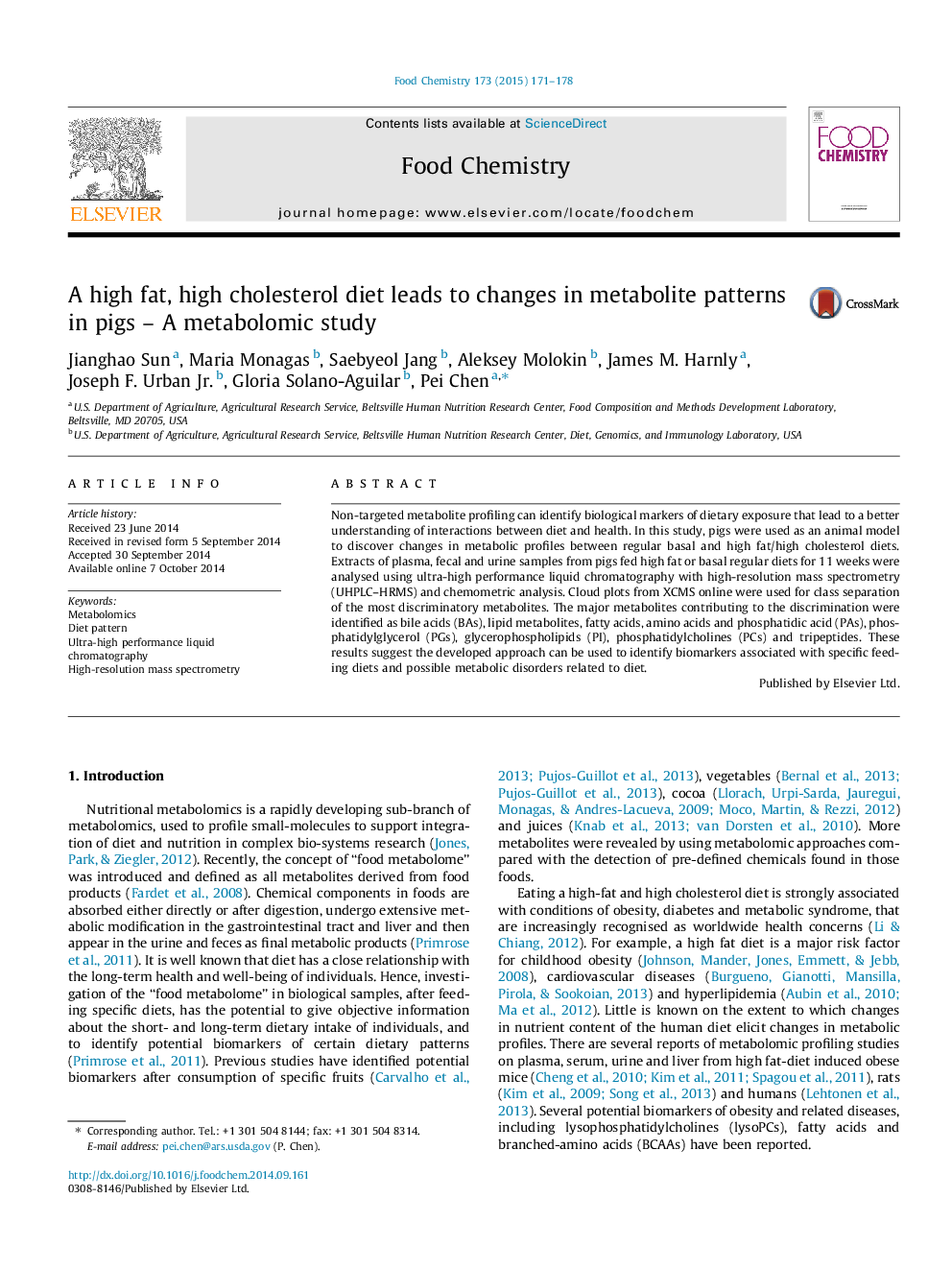| Article ID | Journal | Published Year | Pages | File Type |
|---|---|---|---|---|
| 7593513 | Food Chemistry | 2015 | 8 Pages |
Abstract
Non-targeted metabolite profiling can identify biological markers of dietary exposure that lead to a better understanding of interactions between diet and health. In this study, pigs were used as an animal model to discover changes in metabolic profiles between regular basal and high fat/high cholesterol diets. Extracts of plasma, fecal and urine samples from pigs fed high fat or basal regular diets for 11Â weeks were analysed using ultra-high performance liquid chromatography with high-resolution mass spectrometry (UHPLC-HRMS) and chemometric analysis. Cloud plots from XCMS online were used for class separation of the most discriminatory metabolites. The major metabolites contributing to the discrimination were identified as bile acids (BAs), lipid metabolites, fatty acids, amino acids and phosphatidic acid (PAs), phosphatidylglycerol (PGs), glycerophospholipids (PI), phosphatidylcholines (PCs) and tripeptides. These results suggest the developed approach can be used to identify biomarkers associated with specific feeding diets and possible metabolic disorders related to diet.
Keywords
Related Topics
Physical Sciences and Engineering
Chemistry
Analytical Chemistry
Authors
Jianghao Sun, Maria Monagas, Saebyeol Jang, Aleksey Molokin, James M. Harnly, Joseph F. Jr., Gloria Solano-Aguilar, Pei Chen,
